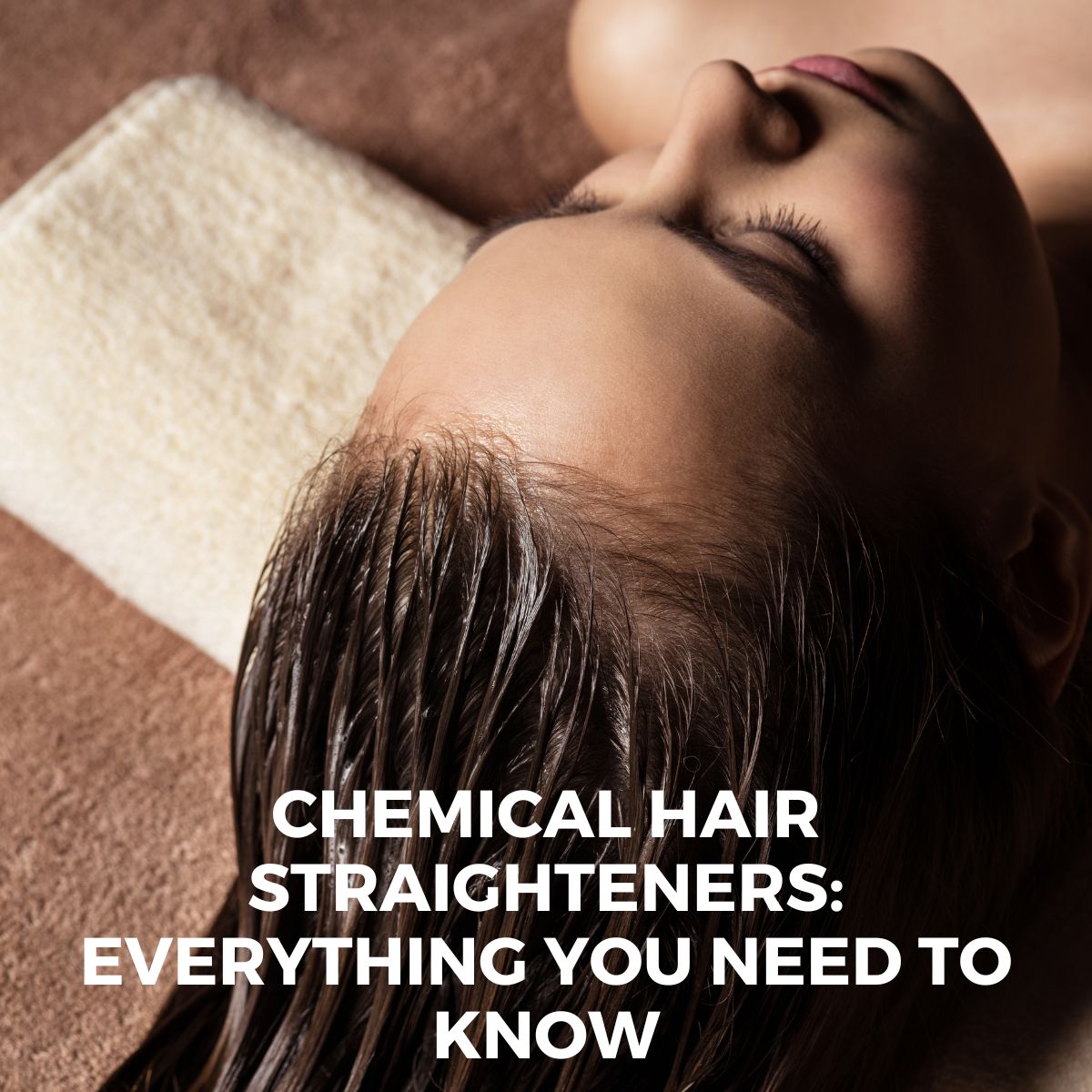Thinking about permanently smoothing your hair? Before you book that appointment, here’s what you need to know about chemical straightening — from how it works to how it compares to safer, modern alternatives.
What Are Chemical Hair Straighteners?
Chemical hair straighteners are salon treatments designed to permanently alter the structure of your hair, breaking down natural bonds (especially disulfide bonds) to make curly, wavy, or frizzy hair appear straight and sleek.
These treatments offer long-lasting results — but often at the cost of hair health and chemical exposure.
How Do Chemical Straighteners Work?
The process involves:
-
Applying a chemical solution that breaks the natural structure of your hair
-
Straightening the hair using heat (usually a flat iron) to set the new shape
-
Neutralizing the hair with another solution to lock in the straight texture
The result is hair that stays straight even after washing — often for months or longer.
Types of Chemicals Used
Some of the most common ingredients in chemical straighteners include:
-
Sodium hydroxide (lye-based relaxers)
-
Calcium hydroxide (no-lye relaxers)
-
Ammonium thioglycolate (used in “Japanese straightening”)
-
Formaldehyde or formaldehyde-releasing agents (in older keratin systems)
⚠️ Formaldehyde has been classified as a known carcinogen when inhaled and may cause irritation, asthma, and long-term health issues.
Pros and Cons of Chemical Hair Straightening
✅ Pros:
-
Long-lasting straightening (up to 6 months or more)
-
Reduces styling time
-
Sleek, flat finish
❌ Cons:
-
High chemical exposure (including toxic fumes)
-
Irreversible damage to curls/waves
-
Increased risk of breakage, dryness, and scalp sensitivity
-
Not recommended for pregnant individuals, sensitive scalps, or bleached hair
Hair Botox vs. Keratin vs. Chemical Straightening
| Feature | Chemical Straightening | Keratin Treatment | Hair Botox |
|---|---|---|---|
| Goal | Permanently straighten | Smooth & reduce frizz | Hydrate, repair, reduce frizz |
| Chemical Risk | High | Medium (varies) | Low to none |
| Suitable for Home Use? | No | Yes (with at-home kits) | Yes (DIY-friendly) |
| Keeps natural texture? | No | Partially | Yes |
| Duration | 6+ months (permanent) | 3–6 months | 4–6 weeks |
Are There Safer Alternatives?
Yes. Clean formulas like Jumy Bee’s Japanese Botox Keratin Hair Mask offer frizz control and hydration without harsh chemicals or permanent damage.
Unlike chemical straighteners, Jumy Bee products:
-
Are formaldehyde-free
-
Work with your natural texture
-
Can be applied safely at home
-
Offer visible results from the first use
-
Are vegan, cruelty-free, and made in the USA
Aftercare Tips for Chemically Straightened Hair
If you’ve already had a chemical treatment, here’s how to preserve your hair health:
-
Use sulfate-free shampoo
-
Limit heat styling
-
Deep-condition weekly
-
Avoid overlapping with bleaching or coloring
-
Sleep on silk pillowcases to reduce friction
-
Consider switching to a non-toxic mask (like hair botox) for maintenance
Final Thoughts
Chemical straighteners may offer long-term results — but often at a high cost to scalp health, hair texture, and overall wellness.
Today, more and more women are turning to non-toxic, ritual-inspired alternatives like hair botox and keratin smoothing masks to get the look they want — without the damage.
Explore clean, effective, and safe smoothing treatments from Jumy Bee. Your hair deserves more than a shortcut — it deserves care.
[Shop Non-Toxic Smoothing Masks → https://jumybee.com/


